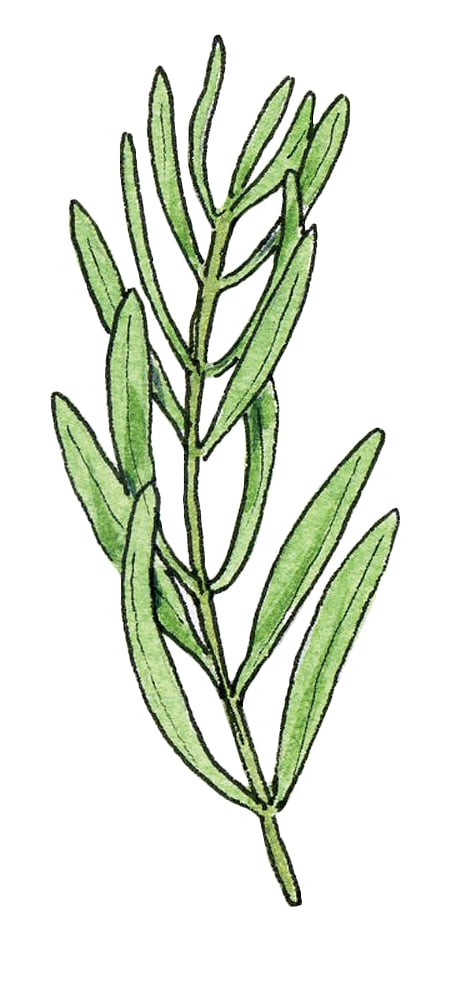Tarragon

Tarragon is a perennial herb in zones 4 and warmer. It develops into a bushy, somewhat leggy plant approximately 18-36" tall. Culinary tarragon is a member of the Artemesia family, most members of which have a licorice flavor including one variety used in making the French aperitif absinthe. It is also related to sagebrush. Culinary tarragon is generally called French tarragon and it is available only as potted plants, not grown from seed. This is the special tarragon flavor that's used in hollandaise and béarnaise sauces. All French tarragon plants are clones propagated from cuttings or divisions of existing plants. Russian tarragon can be grown from seed, but the flavor is not the same.
Buy a small tarragon plant or get a division from a friend. Plant it in full sun to partial shade, in average garden soil. Mix in compost at planting time, but do not give it any fertilizer. Good drainage is important, so growing in a raised bed is helpful. It will tolerate a variety of soil conditions and a pH of 6.2-8.0.
Tarragon is relatively trouble free it is not usually bothered by insects or diseases. It is not a long-lived perennial so it should be dug up and divided every three to four years. Divide early in the spring, getting rid of the older, woodier roots and keeping smaller roots (with shoots attached) for replanting.
Tarragon leaves can be harvested at any time, though the best flavor is from leaves that are picked before the plant flowers. Leaves can be air-dried in a dark room by hanging a few sprigs bunched together and leaving for a few days. Do not dry it in the oven or in a dehydrator as the essential oils will evaporate. Tarragon is best used fresh you can keep it for a few weeks in a zipper bag in the vegetable drawer of your refrigerator. One of the best ways to enjoy tarragon is to steep the leaves in vinegar and use the flavored vinegar in dressings and marinades.
When growing tarragon in raised beds, you may wish to plant it near other perennial plants or herbs (chives, sage, etc.). It can also be grown in a pot. If you are in zone 4 or 5, the pot will need to be sunk into the soil up to the rim to prevent the roots from freezing. Good drainage is essential for winter survival.
Last updated: 01/29/2021
Print this Article:
Get the Dirt
Stay up to date on new articles and advice. Please fill out the information below.
